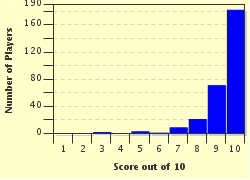Quiz Answer Key and Fun Facts
1. Which of these names was not a period of pre-historic Britain?
2. Tiny pieces of coloured stone put together like a puzzle can be used to create flooring and walls. What do we call this type of decorative art the Romans brought when they invaded Britain?
3. Which two men from north-west Europe led the first Anglo-Saxon invasion of Britain in the 5th century?
4. The Vikings invaded Britain in the 9th century but how did they travel across the North Sea from Europe?
5. What was the name of the group of people from France who defeated King Harold II at the Battle of Hastings in 1066?
6. "To be or not to be" was a quote by which famous writer who lived during the Tudor period?
7. "Remember, remember, the _____ of November, gunpowder, treason and plot." What is the missing word from this quote?
8. Inventors and their inventions exploded on the scene during the Georgian era with pioneering discoveries that would change Britain and the rest of the world. What was this period better known as?
9. What was the name of the British monarch who reigned from 1837 to 1901?
10. Which king, who died in 1485 at the Battle of Bosworth Field, was re-buried at Leicester Cathedral in 2015?
Source: Author
Plodd
This quiz was reviewed by FunTrivia editor
NatalieW before going online.
Any errors found in FunTrivia content are routinely corrected through our feedback system.


